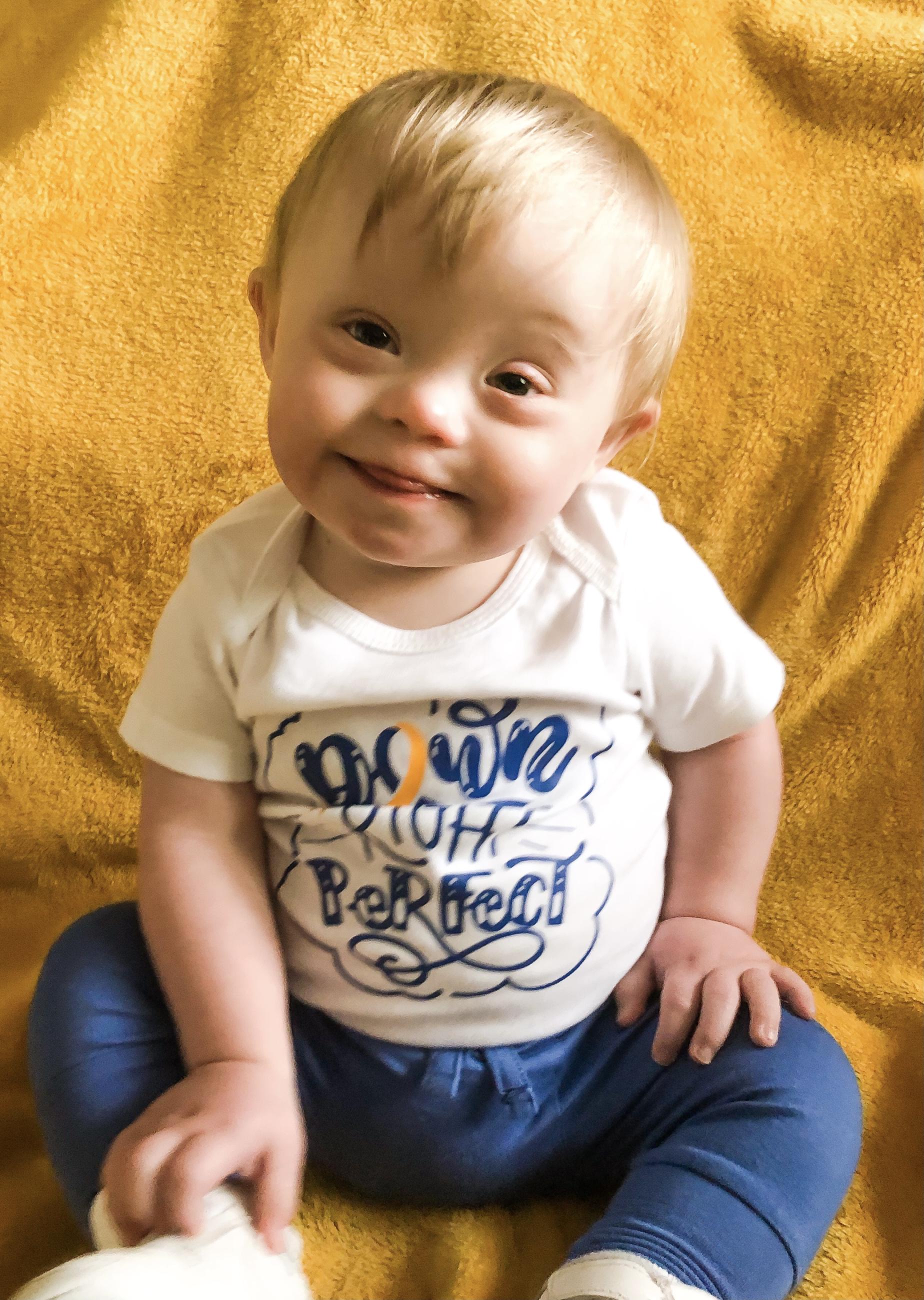What are the Most Common Baby Disorders?
The most common baby disorders include jaundice, colic, diaper rash, and thrush. These can cause discomfort and concern for new parents.
Jaundice, a yellowing of the skin and eyes, is caused by elevated bilirubin levels and is generally not serious. Colic is known for causing excessive crying and fussiness, but typically resolves on its own by three or four months. Diaper rash is commonly caused by prolonged exposure to wetness, and thrush is a type of yeast infection that can occur in the mouth or diaper area.
While these conditions can be worrisome, most resolve with proper care and attention.

Credit: ndss.org
What Are Baby Disorders?
Baby disorders are conditions that affect infants and can sometimes be overwhelming for new parents. As a first-time parent, it’s essential to know what baby disorders are, how common they are, and why understanding them is important. In this post, we will discuss the definition of baby disorders, their frequency and impact, and why parents should educate themselves on the topic of baby disorders.
Definition Of Baby Disorders
Baby disorders are health conditions that affect newborns and young infants. These conditions can range from minor to severe and can impact a baby’s development and well-being. Some common baby disorders include:
- Colic
- Jaundice
- Skin rashes
- Gastroesophageal reflux disease (gerd)
- Constipation and diarrhea
- Respiratory syncytial virus (rsv)
- Croup
- Ear infections
- Sudden infant death syndrome (sids)
How Common Are Baby Disorders?
Baby disorders affect a significant number of infants worldwide. Some conditions are more common than others, while some are very rare. Here are some statistics to help give you a better understanding of their frequency:
- Colic affects up to 40% of all babies
- Jaundice affects 60% of full-term babies
- About 20-30% of infants suffer from skin rashes
- Gerd affects up to 65% of infants
- Respiratory syncytial virus (rsv) affects almost all babies by age two
- Around three in every four children experience at least one ear infection by the time they reach the age of three
- Croup most often occurs in children aged 6 months to 3 years
- Sudden infant death syndrome (sids) accounts for approximately 3,500 infants who die each year in the u.s.
Why Understanding Baby Disorders Is Important?
Understanding these common infant disorders is crucial for new parents. Here are some reasons why you should familiarize yourself with them:
- Early identification of baby disorders can lead to prompt medical attention, resulting in better outcomes and less severe symptoms.
- If left untreated, many baby disorders can have a long-lasting impact on a baby’s health and development.
- Knowing the signs and symptoms of common baby disorders can help new parents feel more confident and prepared in taking care of their child.
- Educating yourself on baby disorders can also help alleviate unnecessary worries, stress, and anxiety associated with being a new parent.
- Understanding baby disorders helps parents identify potential red flags and make informed decisions when it comes to choosing appropriate medical treatments or seeking to consult with pediatricians.
Educating new parents on common infant disorders is vital. Knowing the signs and symptoms suggests there is an issue, and when to schedule an appointment with a pediatrician allows parents to take action to protect the well-being and overall growth of their newborn.
Congenital Heart Defects
Definition Of Congenital Heart Defects
Congenital heart defects (chds) are present at the time of birth and affect the structure of the heart and its functionality. These defects vary in severity, with some being minor and others potentially life-threatening.
Causes Of Congenital Heart Defects
The exact causes of chds are unknown, but some factors that may increase the risk include:
- Genetics
- Environmental factors
- Maternal illness during pregnancy
- Certain medications or drugs used during pregnancy
- Poor nutrition during pregnancy
Symptoms Of Congenital Heart Defects
The symptoms of chds depend on the type of defect and its severity. Some common symptoms include:
- Bluish skin or lips (cyanosis)
- Rapid breathing
- Poor feeding or weight gain
- Fatigue or weakness
- Delayed growth and development
- Shortness of breath during activity
- Chest pain or palpitations
Diagnosis Of Congenital Heart Defects
Diagnosis of chds typically involves a physical exam, medical history, and diagnostic tests, including:
- Fetal echocardiography during pregnancy
- Echocardiogram (ultrasound of the heart)
- Chest x-ray
- Electrocardiogram (ecg)
- Cardiac catheterization
- Magnetic resonance imaging (mri)
Treatment Of Congenital Heart Defects
The treatment of chds depends on the type and severity of the defect. Some options include:
- Medications to control symptoms
- Surgery to repair the defect
- Cardiac catheterization to repair the defect
- Heart transplant in severe cases
It is essential to monitor and treat chds to prevent complications and improve quality of life. Early diagnosis and treatment can make a significant difference in the outcome for babies born with chds, leading to a healthy and happy life.
Cleft Lip And Palate
Definition Of Cleft Lip And Palate
Cleft lip and palate is a congenital defect that occurs when a baby’s mouth does not form properly during pregnancy. This results in a gap or split in the upper lip, roof of the mouth, or both. It can affect a baby’s ability to eat, speak, and breathe normally.
Causes Of Cleft Lip And Palate
The exact cause of cleft lip and palate is not known, but it is believed to be a combination of genetic and environmental factors. Some of these factors include:
- Family history
- Maternal smoking or alcohol use during pregnancy
- Vitamin deficiencies in the mother during pregnancy
- Exposure to certain medications or chemicals during pregnancy
Symptoms Of Cleft Lip And Palate
The most obvious symptom of cleft lip and palate is the visible split or gap in the upper lip or roof of the mouth. Other symptoms can include:
- Difficulty breastfeeding or bottle-feeding
- Difficulty sucking or swallowing
- Chronic ear infections
- Delayed speech development
- Dental problems
Diagnosis Of Cleft Lip And Palate
Cleft lip and palate can usually be diagnosed during a routine ultrasound in the second trimester of pregnancy. After birth, a visual examination of the baby’s mouth and palate will confirm the diagnosis. Additional imaging tests may be needed to determine the extent of the defect.
Treatment Of Cleft Lip And Palate
Treatment for cleft lip and palate usually requires a combination of surgeries and therapies. Some possible treatments include:
- Surgery to repair the cleft lip or palate
- Speech therapy to help the child learn to speak properly
- Orthodontic treatment to address dental problems
- Ear tube surgery to prevent chronic ear infections
Early intervention and treatment is crucial for a child with cleft lip and palate to have the best possible outcome. With proper care, children born with this condition can go on to lead happy, healthy lives.
Down Syndrome
Down syndrome is a common genetic disorder that affects about 1 in every 1,000 babies born worldwide. This condition happens when there is an extra copy of chromosome 21, which results in developmental delays and physical features that are different from those typically seen in children without the syndrome.
In this section, we will discuss the key points related to down syndrome, including its definition, causes, symptoms, diagnosis, and treatment.
Definition Of Down Syndrome
Down syndrome is a genetic disorder characterized by developmental delays and physical differences caused by an extra copy of chromosome 21. There are three types of down syndrome, including trisomy 21, translocation, and mosaicism, with trisomy 21 being the most common.
Causes Of Down Syndrome
The primary cause of down syndrome is an extra copy of chromosome 21, which may occur due to genetic changes during the formation of an egg or sperm cell. Other factors that may increase the risk of having a child with down syndrome include maternal age, family history, and exposure to certain environmental factors.
Symptoms Of Down Syndrome
The symptoms of down syndrome can vary greatly from child to child but generally include developmental delays, intellectual disabilities, distinct facial features, and certain medical conditions such as heart defects and hearing problems. Children with down syndrome may also have difficulty with speech and language skills, as well as fine and gross motor skills.
Diagnosis Of Down Syndrome
A diagnosis of down syndrome is usually made based on physical symptoms and genetic testing, including blood tests and chorionic villus sampling (cvs) or amniocentesis. These tests can detect the presence of an extra chromosome 21 during pregnancy or after birth.
Treatment Of Down Syndrome
There is no cure for down syndrome, but there are many treatment options that can help manage symptoms and improve quality of life. These may include early intervention programs, speech and physical therapy, special education, and medical interventions for associated health conditions such as heart defects.
Regular medical checkups and ongoing support from healthcare professionals, caregivers, and loved ones are essential for children with down syndrome.
Down syndrome is a common genetic disorder that affects many babies worldwide. While there is no cure for this condition, early diagnosis, and access to appropriate treatment and support can significantly improve outcomes for children with down syndrome and their families.
Spina Bifida
Spina bifida is a congenital disorder in which the neural tube, a development that turns into the spinal cord, does not close properly. This condition causes damage to the spinal cord and nerves, which can result in physical, intellectual, and social impairments.
In this section, we will explore the definition, causes, symptoms, diagnosis, and treatment of spina bifida.
Definition Of Spina Bifida
Spina bifida is a birth defect that occurs when the neural tube, a structure that forms the spinal cord and brain, fails to close completely. This condition can lead to various neurological issues, such as paralysis, bladder dysfunction, and cognitive impairment.
Causes Of Spina Bifida
The exact causes of spina bifida are not well understood, but some risk factors include genetic and environmental factors. Here are the key takeaways:
- Genetics and family history can play a role in increasing the risk of spina bifida in newborns.
- Environmental factors, such as malnutrition and exposure to toxins, can also increase the risk of developing spina bifida during pregnancy.
Symptoms Of Spina Bifida
Symptoms of spina bifida can vary depending on the severity of the condition. In severe cases, symptoms can be apparent at birth, whereas in mild cases, symptoms may not appear until later in life. Some common symptoms include:
- An opening in the spine
- Weakness or paralysis in the legs
- Bladder and bowel problems
- Hydrocephalus, or excess fluid in the brain
- Cognitive impairment and learning difficulties
Diagnosis Of Spina Bifida
Diagnosis of spina bifida can occur during pregnancy or after birth. Prenatal screening can be done through a blood test or ultrasound to detect any signs of neural tube defects. After birth, a physical examination and imaging tests such as an mri or ct scan may be performed to confirm the diagnosis.
Treatment Of Spina Bifida
There is currently no cure for spina bifida, but treatment can help manage symptoms and prevent complications. Treatment options may include:
- Surgery to repair the spinal cord opening
- Physical therapy to improve strength and mobility
- Medications to manage symptoms such as bladder and bowel dysfunction
- Assistive devices such as braces or mobility aids
Spina bifida is a congenital disorder that affects the nervous system and can have a range of physical, intellectual, and social impacts. While there is no cure for spina bifida, early diagnosis and treatment can help manage symptoms and improve quality of life for those affected.
Newborn Jaundice
Jaundice is a condition where the skin and the whites of the eyes appear yellowish. It can be seen in infants and adults. When jaundice occurs in newborns, it is known as “newborn jaundice. ” This is a common condition, affecting up to 60% of newborns in the first week of life.
Newborn jaundice usually disappears within two to three weeks without treatment.
Definition Of Newborn Jaundice
Newborn jaundice is a condition in which a newborn baby’s skin and the whites of their eyes appear yellowish. This happens when there is an excess of bilirubin in the baby’s blood. Bilirubin is a yellow pigment that is formed when red blood cells break down.
The liver is responsible for processing bilirubin, but the baby’s liver may not be fully developed, leading to elevated levels of bilirubin.
Causes Of Newborn Jaundice
Newborn jaundice can occur due to various reasons. Some of the common causes include:
- Hemolysis: This is a condition where there is an excessive breakdown of red blood cells, leading to increased bilirubin production.
- Immature liver: The baby’s liver may not be fully developed, leading to a decreased ability to process bilirubin.
- Breastfeeding: In some cases, breastfed newborns may develop jaundice because breast milk contains substances that can lead to increased bilirubin levels.
- Blood group incompatibility: When a mother and baby have different blood types, the mother’s antibodies may attack the baby’s red blood cells, leading to hemolysis and increased bilirubin levels.
Symptoms Of Newborn Jaundice
Common symptoms of newborn jaundice include:
- Yellowing of the skin and whites of the eyes
- Poor feeding and lethargy
- Dark urine and pale stools
- High-pitched crying
If you notice any of these symptoms in your newborn, please contact your doctor immediately.
Diagnosis Of Newborn Jaundice
Diagnosis of newborn jaundice is done based on clinical examination and measuring the bilirubin levels in the baby’s blood. The doctor may also evaluate the baby’s overall health and determine if any underlying conditions need to be treated.
Treatment Of Newborn Jaundice
In most cases, newborn jaundice does not require any treatment and resolves on its own within two to three weeks. However, in severe cases, treatment may be necessary. Common treatments for newborn jaundice include:
- Phototherapy: This involves exposing the baby’s skin to special blue lights that help break down bilirubin.
- Exchange transfusion: This is a procedure where the baby’s blood is replaced with donor blood to reduce bilirubin levels.
Always consult with your doctor if you notice any signs of jaundice in your newborn. With proper care and treatment, most cases of newborn jaundice can be resolved without complications.
Sudden Infant Death Syndrome (Sids)
Sudden infant death syndrome (sids) is a tragic and sudden loss of an infant under the age of one. Although the exact cause of sids is still unknown, several factors are known to increase a baby’s risk. In this section, we will discuss the definition, causes, symptoms, diagnosis, and prevention of sudden infant death syndrome (sids).
Definition Of Sudden Infant Death Syndrome (Sids)
Sudden infant death syndrome (sids) is the unexplained death of a baby under one year of age, which is usually during sleep. Sids is also known as “cot death” or “crib death”. It is a frightening and devastating loss for parents and family members.
Causes Of Sudden Infant Death Syndrome (Sids)
The exact cause of sids is not known yet, but there are some factors that increase the risk of sids, such as:
- Sleeping on the stomach or side
- Sleeping on a soft surface such as pillows or blankets
- Overheating during sleep
- Exposure to cigarette smoke
- Premature birth or low birth weight
- Family history of sids
Symptoms Of Sudden Infant Death Syndrome (Sids)
Sudden infant death syndrome (sids) does not have any specific warning signs or symptoms. The baby may look healthy before being put to bed and then die suddenly without any obvious reason.
Diagnosis Of Sudden Infant Death Syndrome (Sids)
Sudden infant death syndrome (sids) is diagnosed by ruling out other possible causes of death. A medical examiner performs an autopsy and reviews medical records and circumstances of the infant’s death to confirm that it was, in fact, sids.
Prevention Of Sudden Infant Death Syndrome (Sids)
There is no guaranteed way to prevent sudden infant death syndrome (sids). However, here are some tips that may help reduce the risk of sids:
- Put the baby to sleep on their back
- Use a firm sleep surface, such as a crib mattress covered with a fitted sheet.
- Avoid soft bedding and loose objects near the baby’s sleep area
- Keep the baby in the same room as the parents for at least the first six months.
- Do not expose the baby to cigarette smoke.
Sudden infant death syndrome (sids) is a heartbreaking and mysterious syndrome that can occur in babies under the age of one. While there’s no guaranteed way to prevent sids, parents can take several precautions to reduce the risk. Be sure to consult with your healthcare provider if you have any concerns about your baby’s health or sleeping habits.
Colic
Colic Is a common baby disorders, affecting up to 40% of infants. It is defined as excessive crying and fussiness in a baby who is otherwise healthy, typically starting around 2-3 weeks of age and lasting until around 3-4 months of age.
In this section, we will explore the definition, causes, symptoms, diagnosis, and treatment of colic.
Definition Of Colic
Colic is characterized by inconsolable crying and fussiness in a healthy baby, usually occurring in the late afternoon or evening. While the exact cause of colic is unknown, several factors are believed to play a role, including digestive issues, food allergies or intolerances, immature nervous system, and parental stress.
Causes Of Colic
Several factors are believed to contribute to the development of colic in babies, including:
- Digestive issues, such as gas, reflux or constipation
- Food allergies or intolerances to breast milk or formula
- Immature nervous system, causing overstimulation and stress
- Parental stress and anxiety, which can be sensed by the baby
Symptoms Of Colic
The following are common symptoms of colic:
- Excessive crying and fussiness, usually beginning in the late afternoon or evening
- Crying that lasts for three hours or more per day, three days per week, for at least three weeks
- Clenched fists, pulling knees to chest, and arching the back while crying
- Refusal to eat or difficulty sleeping
- Increased gassiness, burping, and spitting up
Diagnosis Of Colic
There is no specific test to diagnose colic, as it is based on clinical symptoms. Your pediatrician may perform a physical exam to rule out any underlying medical issues that could be contributing to your baby’s crying. It is important to keep in mind that colic is a self-limited condition that typically resolves on its own by around four months of age.
Treatment Of Colic
There are several strategies that you can try to help soothe your baby’s crying and fussiness:
- Try different feeding techniques, such as smaller, more frequent feeds or changing the bottle nipple size
- Experiment with different formulas or eliminating certain foods from your diet if you are breastfeeding
- Soothe your baby with a warm bath, gentle massage, or white noise
- Use an infant swing or bouncy seat to rock your baby gently
- Take breaks and practice self-care to manage parental stress and anxiety
Colic is a common disorder that can be distressing for both the baby and parents. While there is no known cure for colic, there are several strategies you can try to help soothe your baby and manage parental stress and anxiety.
Consult your pediatrician if you have any concerns about your baby’s crying or overall health.
Frequently Asked Questions For What Are The Most Common Baby Disorders?
What Are The Most Common baby Disorders?
Common disorders in babies include colic, reflux, jaundice, diaper rash, and eczema.
What Is Baby Colic And How To Deal With It?
Baby colic is intense crying for more than three hours a day, three days a week. Use a pacifier, carry your baby, and swaddle them to deal with it.
When Should I Be Worried About My Baby’S Jaundice?
If your baby’s jaundice lasts longer than two weeks, becomes worse, or they seem lethargic, contact their pediatrician.
What Is Diaper Rash, And How To Prevent It?
Diaper rash is irritated skin in the diaper area. Change your baby’s diaper frequently, use a barrier cream, and give them diaper-free time.
What Causes Eczema, And How To Treat It?
Eczema is a skin rash that can be caused by genetics, irritants, or allergies. Treat it with moisturizers, avoiding triggers, and prescribed creams.
Conclusion
It’s heartbreaking to see little ones suffer from health conditions. As parents or caregivers, we must be attentive to symptoms and seek medical advice when we suspect something is wrong. The most common baby disorders can range from minor to life-threatening situations.
These conditions may include jaundice, colic, acid reflux, and ear infections. Although some of these ailments can be easily treated, they should not be taken lightly as they can lead to more severe complications. Other conditions may require more complex treatments and long-term care.
In any case, early detection and timely intervention can help manage symptoms and prevent further complications. As we care for our little ones, it’s essential to stay informed and seek medical attention when necessary. With proper care and attention, with common baby disorders can overcome obstacles and reach their full potential.






